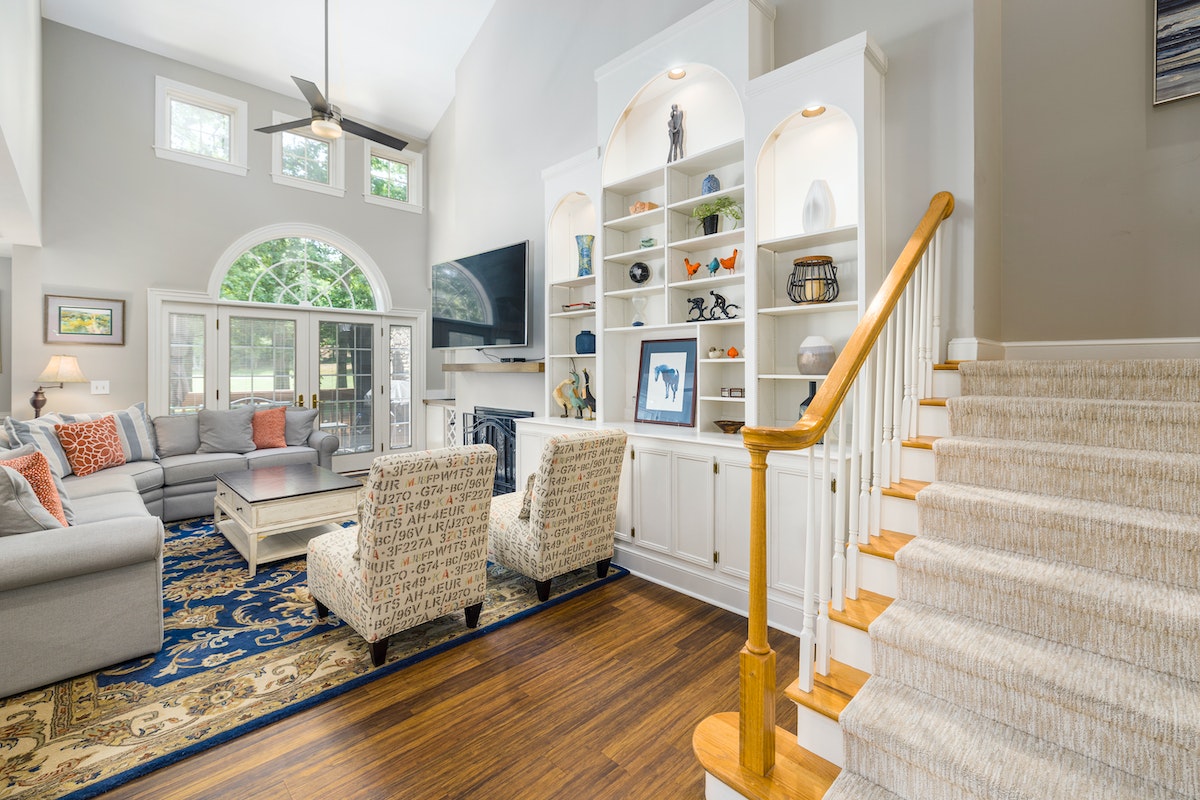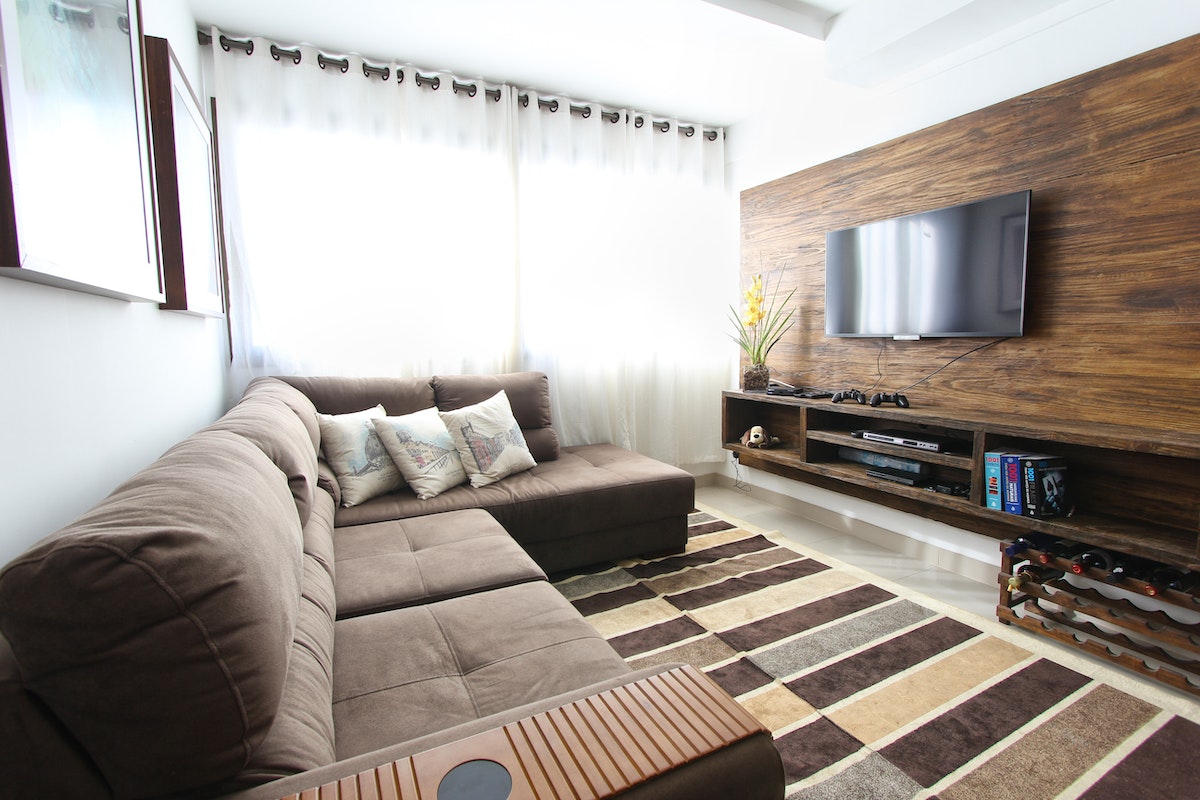As future homeowners, have you ever wondered why some rooms just make you feel a certain way? It’s all about color. Yes, the hues on your walls can dramatically shift the mood of a room. It can evoke emotions, create illusions, and even influence our behavior. This is where color psychology in interior design comes into play.
Today, we will explore the impact of color psychology in interior design and how it can be a game-changer for your dream home. We aim to understand how color impacts our emotions and how you can use this knowledge to create your dream home.
Understanding Color Psychology
Before we dive into the impact of colour psychology in interior design, let’s first understand what it is all about. Color psychology is the study of how colors influence our feelings and behaviors. When applied to interior design, it becomes a powerful tool in setting the ambiance of a space. Whether you want to consider residential or commercial interior design, understanding colour psychology can significantly enhance your project. It suggests that different hues can elicit specific responses from individuals.
In interior design, color psychology creates a desired mood or atmosphere in a room. By understanding the impact of color psychology in interior design, you can use this knowledge to enhance the overall look and feel of a space. Let’s take a closer look at the different colors and their effects.
The Impact of Colors in Interior Design
Red
The color red is often associated with passion, energy, and excitement. It can increase heart rate and blood flow, making it a great choice for spaces where you want to create a sense of urgency or attract attention. In interior design, this color is best used sparingly as it can be overwhelming if overused.
Blue
Blue is known for its calming effects, making it a popular choice for bedrooms and spaces where relaxation is essential. It can also create a sense of security and trust, making it an ideal color for offices or clinics. In interior design, blue is often used to create a serene and tranquil environment.
Yellow
Yellow is associated with happiness, positivity, and warmth. It can stimulate the mind and increase energy levels, making it a great color for kitchens or spaces where creativity is encouraged. However, too much yellow can be overwhelming and cause anxiety. In interior design, yellow can be used to add a pop of color or brightness to a room.
Green
Green is associated with nature, growth, and harmony. It has a calming effect, making it an excellent choice for bedrooms or meditation spaces. Green is also often used in healthcare facilities as it is believed to promote healing. When used in residential interior design, green can create a peaceful and balanced atmosphere.
Purple
Purple is often associated with luxury, creativity, and spirituality. It can add a touch of elegance and sophistication to a room. In interior design, purple is best used in moderation as it can be overpowering if used excessively. In bedrooms, it can create a sense of romance and intimacy.
Orange
Orange is associated with vitality, energy, and warmth. It can stimulate creativity and appetite, making it a great color for dining rooms or creative spaces. However, like yellow, too much orange can be overwhelming. In interior design, orange is often used to add a playful touch to a room.
How to Use Color Psychology in Your Home
Now that we understand the impact of color psychology in interior design let’s explore how you can incorporate it into your dream home. Here are some tips to get you started:
Consider the function of each room
Different rooms serve different purposes, and therefore, it’s important to choose a color scheme that complements and enhances its intended function. For instance, in a bedroom, where relaxation and rest are paramount, opting for soothing and calming hues like soft blues or neutral tones can create a tranquil atmosphere conducive to sleep. On the other hand, using vibrant and energizing colors like red in a bedroom may not be ideal as it can stimulate the senses and hinder the ability to unwind and fall asleep easily.
Use a balanced color palette
To create a visually pleasing and harmonious room, it is crucial to have a well-balanced mix of colors. Avoid using an excessive amount of one color, as this can result in an unbalanced and overwhelming space that lacks visual interest. Select and combine different hues, tones, and shades for a more nuanced and inviting atmosphere. Remember, the right balance of colors can greatly impact the overall aesthetic and ambiance of a room.
Use complementary colors
Complementary colors, which are positioned opposite each other on the color wheel, have the unique ability to create a visually appealing and harmonious look when used together. This harmonious effect is achieved by the contrast between the colors, enhancing the overall visual impact. For instance, when pairing the cool hue of blue with the warm hue of orange or combining the vibrant yellow with the rich purple, the resulting combination not only catches the eye but also creates a sense of balance and unity in the composition.
Experiment with different shades
Don’t be afraid to experiment with different shades to create depth and dimension in a room. By incorporating a combination of light and dark shades of blue, you can add visual interest and create a captivating ambiance that truly elevates the space. The lighter shades can bring a sense of freshness and openness, while the darker shades add richness and sophistication. This interplay of hues not only adds depth but also allows for a dynamic and visually stimulating environment that is sure to impress.
Consider the size and lighting of the room
The size and lighting of a room play a crucial role in how colors are perceived. In smaller rooms, using lighter colors can create an illusion of spaciousness and make them seem larger than they actually are. On the other hand, darker colors can be employed in larger rooms to add a sense of coziness and intimacy. Carefully consider the interplay between room size, lighting, and color choices. This will create a harmonious and visually appealing environment that perfectly suits your preferences and needs.
The Emotional Spectrum of Colors in Interior Design

Color psychology in interior design is not just about choosing colors that look aesthetically pleasing, but it’s also about understanding the emotional impact they have on us. By being mindful of color choices, we can create spaces that not only look beautiful but also elicit specific emotions or behaviors from ourselves and others.
So, when designing your dream home, don’t underestimate the power of color. Use this knowledge to create a space that not only looks stunning but also makes you feel exactly the way you want to feel in each room. Get creative, have fun, and let color psychology be your game-changer when you conceptualize your interior design ideas.
Color Your Home with Psychology
Color psychology in interior design is a game-changer for your dream home. Understanding the impact of color psychology in interior design allows you to use colors strategically to create the desired ambiance and mood in each room. When you understand the emotional spectrum of colors, you can evoke specific feelings and behaviors in yourself and others.
Color Trends and Their Psychological Impact
When considering color psychology in interior design, it’s also important to consider current color trends. These trends can often reflect the collective mood and desires of society. For instance, Pantone’s color of the year for 2023 is “Ultimate Gray” and “Illuminating,” a bright yellow, representing resilience and hope. This color combination reflects the current state of the world, where we are seeking balance and optimism amidst challenging times. Understanding trends can help you make decisions that are stylish, relevant, and psychologically resonant.
The Connection Between Color and Architecture
Architecture and color psychology have a captivating intersection that offers countless intriguing possibilities. Consider how high ceilings, for instance, can be painted with cool colors to accentuate a sense of openness and airiness, while cozy nooks can be adorned with warm hues to create an atmosphere of intimacy and comfort. Appreciating this profound connection can greatly assist you in making well-informed color decisions that beautifully complement and enhance the architectural features of your home.
Color Psychology in Interior Design
Color psychology is a powerful tool in home interior design, and understanding it can significantly enhance your ability to create spaces that are not only visually appealing but also emotionally resonant. Whether you’re designing your dream home or just looking to make some updates, consider the psychological impact of your color choices. With a little understanding and creativity, you can use color to create a home that truly reflects and supports your unique lifestyle and emotional needs.
Things to Consider When Using Color Psychology
While color psychology can be a valuable tool in your interior design journey, there are some things to consider when using it. Below are some key points to keep in mind:
- Personal preference: Ultimately, your personal preferences and tastes should guide your color choices. Don’t feel pressured to conform to specific color palettes just because they are deemed popular or “on trend”.
- Cultural influence: Different cultures may have different associations with colors, so it’s essential to be mindful of this when designing for a diverse audience.
- Balance and contrast: While using contrasting colors can create a powerful impact, too much contrast can be overwhelming. Be sure to balance out your color choices and consider the overall harmony of the space.
- Lighting: Natural and artificial lighting can greatly affect how colors are perceived in a room. Consider how lighting may change throughout the day and how it might influence your color choices.
- Overall aesthetic: Color psychology is just one aspect of interior design. It’s important to consider how your color choices fit into the overall aesthetic and style you are trying to achieve. Remember to keep the big picture in mind.
- The functionality of a room: The purpose of a room should also be considered when choosing colors. For example, calming and muted tones may be more suitable for a bedroom, while vibrant and energetic shades may work well in an exercise or playroom.
Remember, creating a well-designed home is all about balance. When you understand and incorporate color psychology into your interior design process, you can create a harmonious and emotionally fulfilling space that truly feels like home.
Wrapping it Up
The impact of color psychology in interior design is profound. By understanding its principles, you can transform your living spaces into an environment that not only reflects your personal style but also promotes your well-being. So, when planning your next home makeover, remember – the right colors can make all the difference. Look for interior design services that incorporate color psychology to bring your dream home to life! So, don’t be afraid to play with colors and let your creativity flow. After all, your home should be a reflection of who you are – vibrant, unique, and full of personality. Happy designing!
